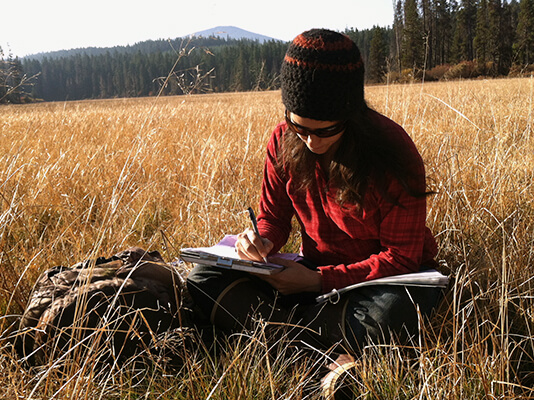 Tools are available to help natural resource professionals rapidly assess the
ecological functions and values of wetlands and streams at a particular site.
Tools are available to help natural resource professionals rapidly assess the
ecological functions and values of wetlands and streams at a particular site.
The Oregon Rapid Wetland Assessment Protocol, Stream Function Assessment Method, and Agate Desert Vernal Pool Assessment Method quantify the functions and values of wetlands and streams based on observable indicators. In most cases, these assessments are required by state rule to predict the loss of wetland and stream functions and values that could occur as a result of a project. The assessments can also be used to ensure compensatory mitigation actions appropriately replace lost functions and values.
Trainings on these assessments are periodically available.
Oregon Rapid Wetland Assessment Protocol
The ORWAP is a standardized tool that enables users to rapidly assess the functions and values of wetlands. Results from ORWAP (including all completed worksheets, maps, and reports) must be included in DSL removal fill permit application package. Components of the ORWAP are provided below. They are also available on the
Aquatic Mitigation Portal of Oregon Explorer.
The current version of ORWAP should be used for most assessments, except for cases in which a site has been assessed over a period of years using an older version of ORWAP. In these cases, you will need to use the same older version of ORWAP, available below.
The SFAM is a tool that can be used to assess the functions and values of streams that are non-tidal and wadable. SFAM Version 2.0 for the State of Oregon was released on Sept. 23, 2024.
Click here to read the SFAM release announcement. Beginning Jan. 1, 2025, stream assessments received with a state removal-fill permit application must be completed using SFAM Version 2.0.
Start by reviewing the SFAM user manual, which provides instructions on how to complete the assessment. For current guidance on how to use SFAM for state regulatory permitting programs, consult the DSL Removal-Fill Guide.
Next, complete the
SFAM Workbook. Fill in queries on the cover page of the spreadsheet and use the other sheets to enter office and field data. Use the
SFAM map tool as an offsite resource to answer questions in the values worksheet. Follow the instruction in the users manual to complete a field assessment. The completed field data sheets will automatically fill in the answer to questions in the functions worksheet. Based on the inputs in the cover page, values sheet, and field data sheets, scores will be automatically calculated in the values, functions, subscores, and scores sheets.
The following tools are helpful references to consult as you conduct your assessment.
- The SFAM Scientific Rationale. Descriptions of the models, illustrations of each measure scoring index, details on the supporting literature, and example scenarios for using SFAM in stream restoration design and predicting change in stream functions. The Oregon Stream Classification System is also described in an appendix to this document.
Previous versions of SFAM are provided below. They should only be used for sites being assessed over a period of years that were evaluated using an older version of SFAM.
Version 1.1
Version 1.0
The Vernal Pool Functional Assessment Model enables users to assess the functions and values of vernal pool wetlands in the Agate Desert, located in Jackson County, Oregon.
Assessment Trainings and Resources
DSL offers ORWAP and SFAM trainings through a partnership with Clackamas Community College's Environmental Learning Center:
- Fall 2025 SFAM Training Workshop is registration is CANCELLED.
- 2026 ORWAP and SFAM dates to be announced. Join the waitlist here.
Questions about Registering for Trainings? Please contact
Bethany Wray at Clackamas Community College with any questions about registering for ORWAP or SFAM trainings.